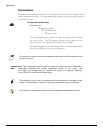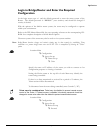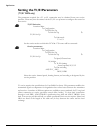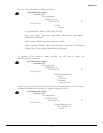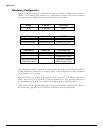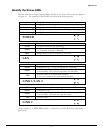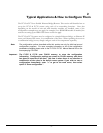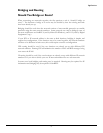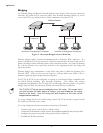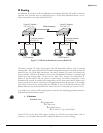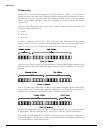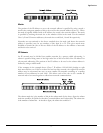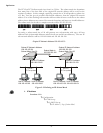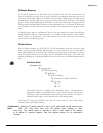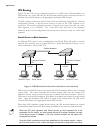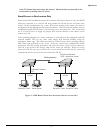
Applications
14
Bridging
An Ethernet bridge intelligently forwards Ethernet data packet traffic between connected
networks. The traffic may be across the Wide Area Network (illustrated below) or, in the
case of the P1730, may be between two LANs connected to the same P1730.
Figure 2 -1 Networks Bridged across a WAN link
Ethernet bridges simply forward information based on Ethernet MAC addresses. If a
packet is destined for a device located on a different network than the device that sent the
packet, the bridge will forward that packet to the connected network. If a packet is destined
for a device located on the same local network as the originating device, the bridge will
ignore the packet.
Ethernet bridges also communicate to each other using what is called the Spanning Tree
Protocol (STP). STP is used to prevent loops in a network which cause traffic to be re-
broadcast again and again causing network congestion.
The P1705 & P1730 are pre-configured to operate as an Ethernet bridge compatible with
the IEEE 802.1d Spanning Tree Protocol definitions. This means that without
configuration modifications, the P1705 & P1730 will bridge Ethernet traffic to its partner
bridges when the Wide Area Network (WAN) connection has been established.
The P1705 & P1730 are also pre-configured as an IPX router. This means that if
you wish to bridge IPX traffic instead of routing it, you must disable the IPX routing
function of the router. Once IPX routing has been disabled, all IPX traffic will be
bridged between networks.
To set-up a bridge between two LANs using a dual LAN P1730, all that is required is that
the LANs be connected to the router.
To set-up a bridge between two networks connected by a WAN link:
− Connect each router to the LAN(s) it will be serving
− Connect the WAN interface of each router to the equipment supplied by the service provider
− Configure the remote site profile of the partner router if necessary
− Establish the WAN connection
WAN connection
Windows for Workgroups Computers
W
indows for Workgroups Computers
Network #1 Network #2



